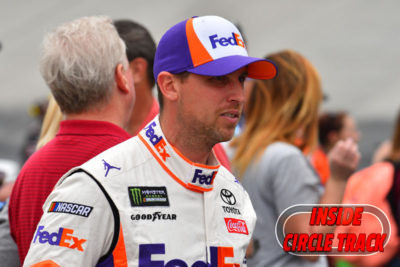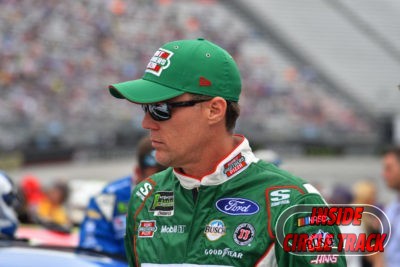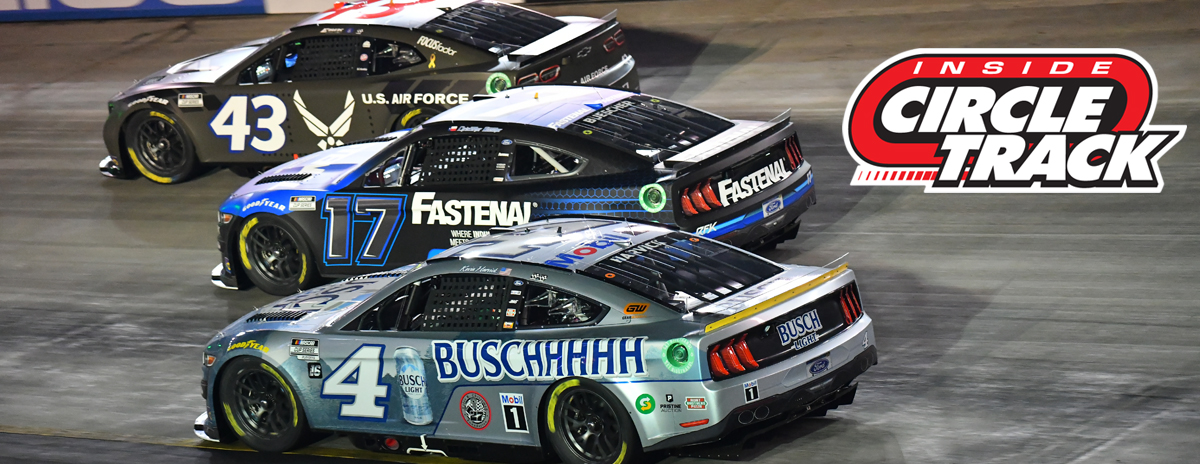
Denny Hamlin
In an article posted recently by Motorsport.com Monster Energy NASCAR Cup Series driver Denny Hamlin stated his belief that the Coca-Cola 600 race held annually on Memorial Day weekend at Charlotte Motor Speedway has outlived its purpose in terms of distance. The winner of this year’s Daytona 500 suggested that the traditional event would hold as much prestige at a distance of 300 miles as it does at its current distance of 600 miles.
“The sport doesn’t ‘need’ any particular thing. I don’t think that anything is totally necessary,” Hamlin said in the article. “If the race was 300 miles, you’re going to have the same, I believe, core group watch the race and possibly even more that are interested because it’s not five hours long.”
Other drivers mentioned the piece – namely Clint Bowyer, Kevin Harvick and Kyle Busch – indicated their belief that the race should remain at its current distance.
The subject of race distances has been a topic of conversation among fans, competitors and media for several years. Those who favor maintaining the longer distances of NASCAR races as they are currently run point to the traditional aspect of events playing out over 400, 500, and even 600 miles. The idea that the longer distances not only brings in the aspect of the car’s durability but also the endurance of the driver.
On the other hand, many of those who agree with Hamlin in that the races ought to be of shorter length would argue that modern-day attention spans are shorter than those of the past and races of shorter duration may be necessary for attracting and capturing the younger audience that will someday be required to keep the sport alive. There are fewer and fewer people today who are willing to dedicate four to five hours of their day watching anything, motorsports or otherwise, according to those who hold this belief.
Other sports leagues have already taken steps in this direction. Major League Baseball has made a concerted effort to shorten the dead times between pitches and between innings in their games. The NBA has reduced the number of timeouts allowed so that the ending of games won’t be prolonged. Even the NFL has sped up game times by restarting the clock after a play goes out of bounds except during the waning minutes of the contest.
If other major sports and their television networks are working toward shortening the duration of their games, is it time for NASCAR to seriously consider doing the same thing?
In the opinion of this writer, there are some races in which the length of the event cannot be touched. Those races whose distances are very much a part of the tradition must remain the same, no matter the sentiment of newcomers. The Coca-Cola 600 is one of those races. Also, the Daytona 500 is sacred and must remain at its traditional length. And more, the Southern 500 at Darlington Raceway has to remain a 500-mile test.
But what about other races?
In years past races were contested over lengths of 500 miles or laps to test the limits of man and machine. In modern times the race cars are far more durable than they once were. In the ten races held so far in 2019 on tracks aside from Daytona and Talladega – tracks noted for large crashes that can take out numerous cars at once – fully 95% of cars have been listed as “running” at the finish which serves as testimony regarding the fact that attrition due to mechanical issues is not as prevalent as in times past.

Kyle Busch
Kyle Busch, who favors maintaining the current 600-mile distance for the Charlotte race, does point out in the Motorsport.com article that mechanical failure is not nearly as common as it once was in NASCAR.
“Is it a tough race for the drivers? It is a tough race for the drivers. Is it as tough as it once was? Maybe not. Is it (tough) on the cars? No. The cars are way too sophisticated now,” Busch said. “I bet you we could probably go 800 maybe even 1000 miles on a race car before you’d start to see problems.”
So where is the balance? At what point should the tradition of the 500-mile race give way to the need to attract and hold the attention of the prospective new fan?
By changing race dates and locations, creating new championship formats, and instituting other changes such as stage breaks, many believe NASCAR alienated much of its core fans and caused them to leave the sport. The decline in television ratings and absence of spectators in the grandstands of many tracks cannot be denied. Many would attribute these declines to those changes instituted largely during the time in which Brian France sat at the head of the sport.
So NASCAR must tread carefully here.
Kevin Harvick agrees, as he states in the Motorsport.com article, that the so-called ‘crown jewel’ races cannot be touched. Beyond that he says consideration may be given to cutting race distances.

Kevin Harvick
“I think as you look at the Coke 600 and you look at the Daytona 500 and the Southern 500, anything past that I would probably say you need to shorten your race,” Harvick said. “Honestly, it’s a crown jewel race. It’s close to home. Everybody puts a lot of effort into it.”
Ultimately, in the opinion of this writer, the real factor to be considered is the amount of action taking place on the track as the biggest factor in keeping the attention of any fan, young or old. I have seen 500-mile races that were so action packed that I hated to see them end. On the other hand, I have seen some races that seemed as if they had gone on forever as one driver dominated and held the lead for much of the way with little in the way of stirring drama during the course of the event.
But the reality is that some races probably do need to be shortened. Not only the current but the future health of NASCAR may very well depend on it as networks, advertisers, and even fans may decide their time is too valuable on a given Sunday afternoon or Saturday evening to spend watching a race that could have provided the same result in a shorter amount of time. Leave the crown jewels alone but others may need to be given the same consideration as other sports.
Richard Allen is a member of the National Motorsports Press Association
Respond to this piece on Twitter –> @RichardAllenIDR
or on Facebook –> InsideCircleTrack/Facebook
